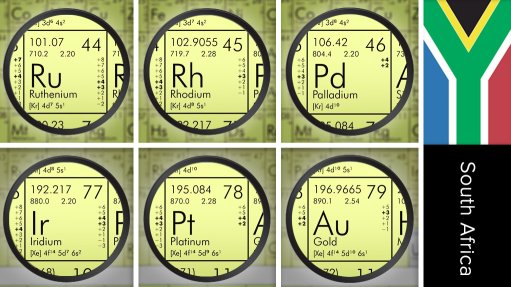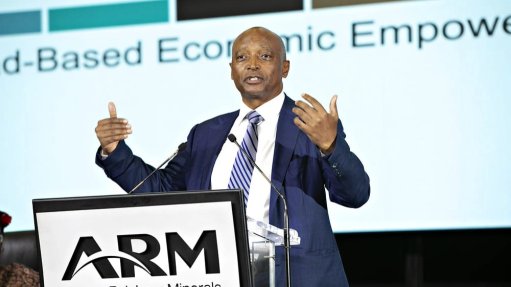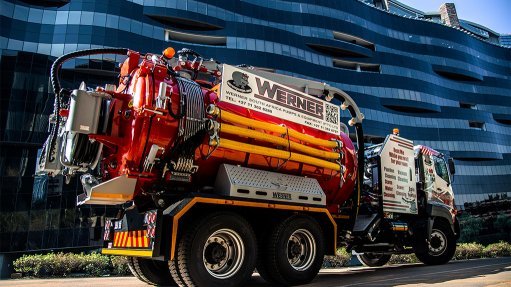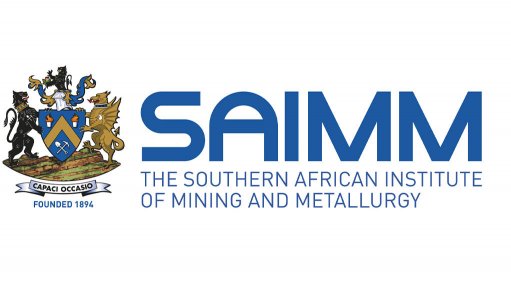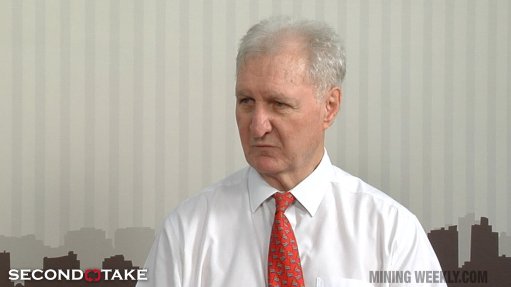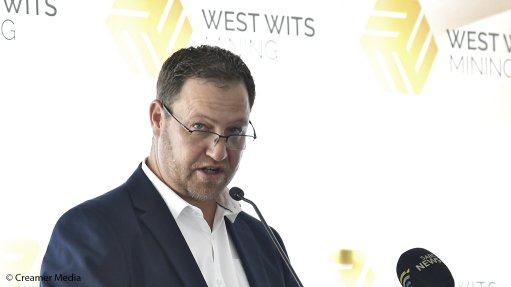Richards Bay Minerals’ three power pacts will supply 80% of the power it consumes

Richards Bay Minerals GM Growth Strategy Bradley Reddy interviewed by Mining Weekly's Martin Creamer. Video: Creamer Media's Nicholas Boyd.
JOHANNESBURG (miningweekly.com) – The three power purchase agreements (PPAs) that Richards Bay Minerals (RBM) has signed to date will provide the lion’s share of this energy-intensive Rio Tinto group company’s current energy needs.
RBM, a northern KwaZulu-Natal heavy mineral sands miner and refiner, produces materials used in everyday products that range from paints to smartphones.
“When all these power purchase agreements are in place, we’ll generate roughly 1.5 TWh, which is about 80% of our annual power consumption,” RBM GM growth strategy Bradley Reddy pointed out to Mining Weekly in an exclusive online interview. (Also watch attached Creamer Media video.)
Electricity consumption comprises around 1.6-million tonnes of CO2e, which represents 80% of annual greenhouse-gas emissions.
The three projects under way are expected to reduce RBM’s annual Scope 1 and 2 emissions by 60% – representing 1.4-million tonnes of CO2e from a 2018 baseline.
A total of 500 MW of renewables generation capacity has been secured for RBM, which consumes 1.8 TWh of power a year.
All three of the PPAs with independent power producers (IPPs) are under construction.
Bolobedu, the 130 MW PV solar farm with Voltalia, has the capacity to generate around 300 GWh of energy a year. This project, located some 120 km east of Polokwane in Limpopo, is scheduled to come online in the fourth quarter of this year.
A year later, the 140 MW wind farm under way with African Clean Energy Developments (ACED), near Swellendam in the Western Cape, is due to come online.
Then, in the first half of 2027, the 230 MW PPA RBM signed with Red Rocket, is expected to come online at Overberg Wind Farm, in the Western Cape.
“The PPAs that we’ve signed to date are expected to reduce Scope 2 emissions quite significantly. When we look at our entire decarbonisation portfolio, we've got a pipeline of opportunities, and hence we believe that RBM will achieve the group target of 50% decarbonisation reduction by 2030.”
All major equipment has been delivered to site at Bolobedu and contractors have been mobilised at Overberg, where the concrete batch plant has been established. This plant will supply the concrete for the foundations of the wind turbines, “so we're quite excited about the progress being made”, an upbeat Reddy enthused.
Additionally, the components for the Khangela Emoyeni Wind Farm with ACED, near Murraysburg in the Western Cape and Northern Cape provinces, have arrived at the Coega port – “and so we’re quite pleased with the progress that the IPPs are making”, Reddy added.
Mining Weekly: Is wheeling living up to expectations given the transmission grid constraints?
Reddy: Although South Africa faces several challenges with regards to grid and generation capacity constraints, we believe that the wheeling framework which Eskom has had in place for a number of years, has been a key contributor to successes achieved with the private-sector participation in the South Africa's electricity market at this point. So, yes, wheeling is living up to expectations.
Are energy aggregators providing the opportunity for shorter offtake arrangements?
One of the benefits of having an interconnected transgression system and wheeling framework is that it enables aggregators to diversify both on the generation mix as well as customer portfolio, and having a diversified portfolio of generation facilities and customer base makes it possible to have more flexible offtake arrangements.
What energy storage arrangements have been made?
From an RBM perspective, we continue to explore energy storage opportunities. Most of our energy projects that I’ve mentioned have some level of storage authorisation already built in. With the technological advancements with energy storage, together with the reduced cost of batteries that we've seen over the last 18 months, storage is becoming a much more attractive solution for high-intensity users and IPPs across the country.
Will on-site renewable-energy generation need to be established to achieve net zero by 2050?
RBM has taken time to develop quite a robust decarbonisation strategy, and with assistance from internal and external advisers, together with industry specialists, we are of the view that there's a definite benefit of having a diversified mix of generation and energy storage, which will enable the goal of net zero.
When it comes to the Rio Tinto group as a whole, how does Richards Bay Minerals rate as a successful decarboniser?
RBM’s successes have not been achieved in isolation. We have enjoyed exceptional support from Rio Tinto’s decarbonisation office and also Rio Tinto’s energy development team throughout the journey that we've been on. So, RBM is viewed as a frontrunner, not only from a South African context perspective, but also within Rio Tinto. With electricity consumption comprising nearly 80% of our annual carbon emissions, the PPAs we've signed up to date are expected to give a significant impact, not only to RBM, but to Rio Tinto as well.
To what extent have you been successful in reducing energy costs and lowering energy consumption?
RBMs senior leadership team has demonstrated their commitment to finding better ways to establish a dedicated energy management department within Richards Bay Minerals, which focuses on not only energy efficiency, but driving energy awareness within the business and also ensuring that our transition to renewable energy is done in a cost-effective manner. So, our efforts, including more energy efficient techniques, modifying our operating regimes, such as load shifting and also peak clipping in certain operational areas, as well as participating in Eskom’s demand response programmes, have helped RBM not only reduce our energy cost, but also improve energy efficiency within our business as well.
What other aspects are regarded as being key?
For RBM, we’re more than just a mining company. We remain committed to our decarbonisation ambition, which is underpinned by our values of courage, care and curiosity. Not only for our employees and operations, but also for the communities in which we operate, that care becomes such a key part of our value system. When we look at courage, we look at it as courage to take up the call and become part of the solution, and then curiosity is to continuously work towards finding better ways. As a business unit and a group, we’ve made significant progress as we commenced with our decarbonisation strategy a few years ago. Much of this progress was made through the efforts of government to enable private-sector participation and we’re really looking forward to how we can continue this journey and be part of the solution within South Africa.
JUST ENERGY TRANSITION
On the financial front, Mining Weekly can report that Absa Corporate and Investment Banking (CIB) has reinforced its position in renewable-energy finance through the provision of R1.6-billion in facilities to Overberg Wind Farm, with a total overall capacity of 380 MW.
The second phase of the project will generate 150 MW of clean wind energy for electricity trader Discovery Green at a competitive energy tariff, with Absa financing wheeled energy transactions.
As more commercial and industrial companies decarbonise their operations, the ability to structure PPAs will help to accelerate the just energy transition.
Absa CIB’s partnership with Red Rocket and Discovery Green is contributing to long-term energy security and emissions reduction.
Article Enquiry
Email Article
Save Article
Feedback
To advertise email advertising@creamermedia.co.za or click here
Press Office
Announcements
What's On
Subscribe to improve your user experience...
Option 1 (equivalent of R125 a month):
Receive a weekly copy of Creamer Media's Engineering News & Mining Weekly magazine
(print copy for those in South Africa and e-magazine for those outside of South Africa)
Receive daily email newsletters
Access to full search results
Access archive of magazine back copies
Access to Projects in Progress
Access to ONE Research Report of your choice in PDF format
Option 2 (equivalent of R375 a month):
All benefits from Option 1
PLUS
Access to Creamer Media's Research Channel Africa for ALL Research Reports, in PDF format, on various industrial and mining sectors
including Electricity; Water; Energy Transition; Hydrogen; Roads, Rail and Ports; Coal; Gold; Platinum; Battery Metals; etc.
Already a subscriber?
Forgotten your password?
Receive weekly copy of Creamer Media's Engineering News & Mining Weekly magazine (print copy for those in South Africa and e-magazine for those outside of South Africa)
➕
Recieve daily email newsletters
➕
Access to full search results
➕
Access archive of magazine back copies
➕
Access to Projects in Progress
➕
Access to ONE Research Report of your choice in PDF format
RESEARCH CHANNEL AFRICA
R4500 (equivalent of R375 a month)
SUBSCRIBEAll benefits from Option 1
➕
Access to Creamer Media's Research Channel Africa for ALL Research Reports on various industrial and mining sectors, in PDF format, including on:
Electricity
➕
Water
➕
Energy Transition
➕
Hydrogen
➕
Roads, Rail and Ports
➕
Coal
➕
Gold
➕
Platinum
➕
Battery Metals
➕
etc.
Receive all benefits from Option 1 or Option 2 delivered to numerous people at your company
➕
Multiple User names and Passwords for simultaneous log-ins
➕
Intranet integration access to all in your organisation







